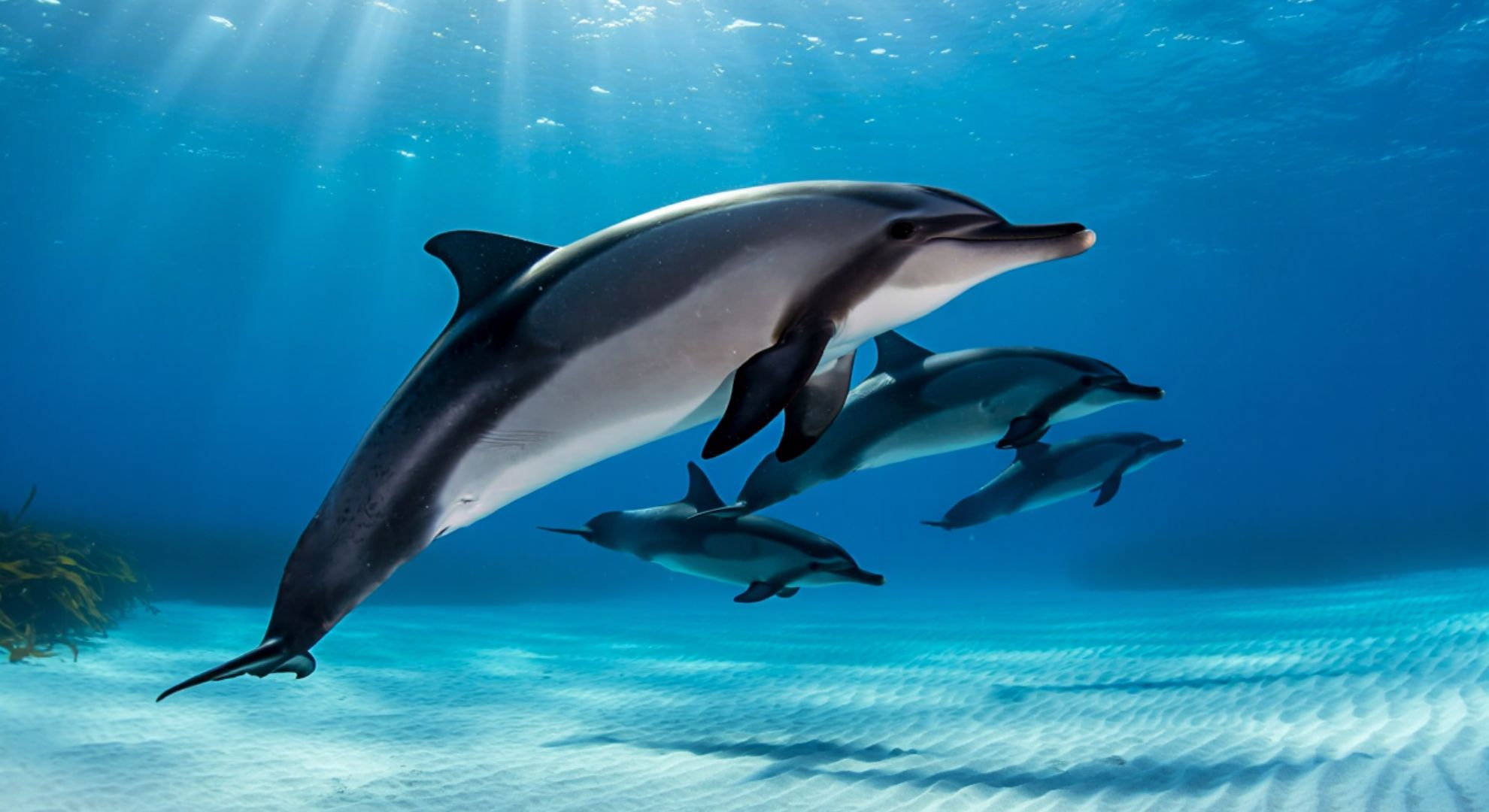The sea was calm, the sky pewter, and then a handful of sleek backs broke the surface like commas in a breathless sentence. Within minutes, radio chatter spiked and cameras clicked. What began as a quiet morning turned into a rare page in local marine history, as a small pod of seldom-seen dolphins danced along the North Island’s coastline.
Fisherfolk, kayakers, and a passing tour skipper described synchronized arcs, a flash of pale flanks, and the stubby dorsal fins that hint at something special. By midday, marine biologists were poring over footage, searching for the clues that separate a routine sighting from a moment that can shift conservation momentum.
A fleeting encounter
The animals surfaced in short, measured bursts, weaving beneath corrugated swells like silvered threads. Observers reported tight group cohesion and an unusual reluctance to bow-ride, details that echo the behavior of the world’s rarest coastal dolphins. “It’s a cautious species, and when they appear, they rarely stay long,” said Dr. Hana Rerekura, a marine ecologist who analyzed the early clips.
Preliminary identification suggests the pod may include Māui dolphins, a critically endangered subspecies known for its rounded dorsal fin and petite frame. Though experts remain careful, the behavioral profile and fin shapes offer hope. “We’re asking for any high-resolution images taken from a safe distance,” added Rerekura, “because every fin is a fingerprint.”
Why this sighting matters
If confirmed, the encounter would mark a notable reappearance of a population under intense pressure. Māui dolphins number in the dozens, not thousands, with threats ranging from bycatch to disease and habitat noise. Each verified observation becomes a data point in a fragile story, helping managers refine protective zones and adapt seasonal rules.
“Their absence is often silent, but their presence changes everything,” noted Kiri Matthews, a conservation ranger. “Even a handful of minutes on the surface can guide months of policy.”
How scientists verify
Identification hinges on a mosaic of details: the curve of the dorsal fin, distinctive nicks or scars, group size and swim pattern, water depth, and the acoustic signatures picked up by underwater recorders. Analysts marry public footage with archived catalogs of known individuals, using photo-ID techniques refined over decades.
When possible, researchers also analyze environmental DNA — trace genetic material shed into the water. “A liter of seawater can carry surprising truths,” said Dr. Paul Ngata, whose team maintains coastal samplers. “It’s like a time-stamped postcard from whatever passed through.”
How these dolphins compare
Below is a quick, side-by-side glance at coastal dolphins commonly discussed in New Zealand waters, illustrating why this week’s encounter stands out.
| Species | Size (adult) | Distinguishing features | Usual range near NZ | Conservation status |
|---|---|---|---|---|
| Māui dolphin | 1.2–1.7 m | Rounded dorsal fin, pale grey with dark mask | Shallow waters off North Island’s west coast | Critically Endangered |
| Hector’s dolphin | 1.2–1.6 m | Similar to Māui; more common around South Island | Coastal South Island, some east coast | Endangered |
| Bottlenose dolphin | 2–4 m | Tall curved dorsal fin, robust build | Bays and offshore islands | Least Concern (some NZ subpopulations at risk) |
| Common dolphin | 1.7–2.4 m | Distinct crisscross hourglass pattern | Offshore and occasionally nearshore schools | Least Concern |
“Think of Māui as the rare book on the highest shelf,” said Matthews. “You don’t just find it; it finds you.”
What locals are saying
On the water, the mood was a blend of awe and discipline. “I throttled back out of instinct,” said Tane Ropoama, a local skipper. “They moved with such deliberate grace that revving past felt like interrupting a chorus.”
A nearby angler, Mere Kohu, caught a brief clip on her phone. “They were right there — small, neat, almost weightless,” she said. “I whispered without even knowing why.”
If you’re on the water
Authorities and scientists ask boaters to maintain careful distances and keep noise low. If you’re lucky enough to cross paths, consider:
- Slow to idle speed, keep at least 300 m away, never cut across their path, and send photos or videos (with GPS and time) to local conservation hotlines.
What comes next
In the coming days, teams will review public submissions, coordinate aerial and vessel surveys, and, if conditions allow, deploy passive acoustic devices along the suspected route. The goal is simple but urgent: confirm the sighting, estimate group size, and map their brief coastal window.
No one is calling it a turning point — not yet. But in a season of heavy swells and thin news, a few fleeting dorsal arcs have reminded an island nation of its luminous neighbors. Out there, where grey water meets grey sky, the rare still happens, and when it does, it asks us to move more softly.
